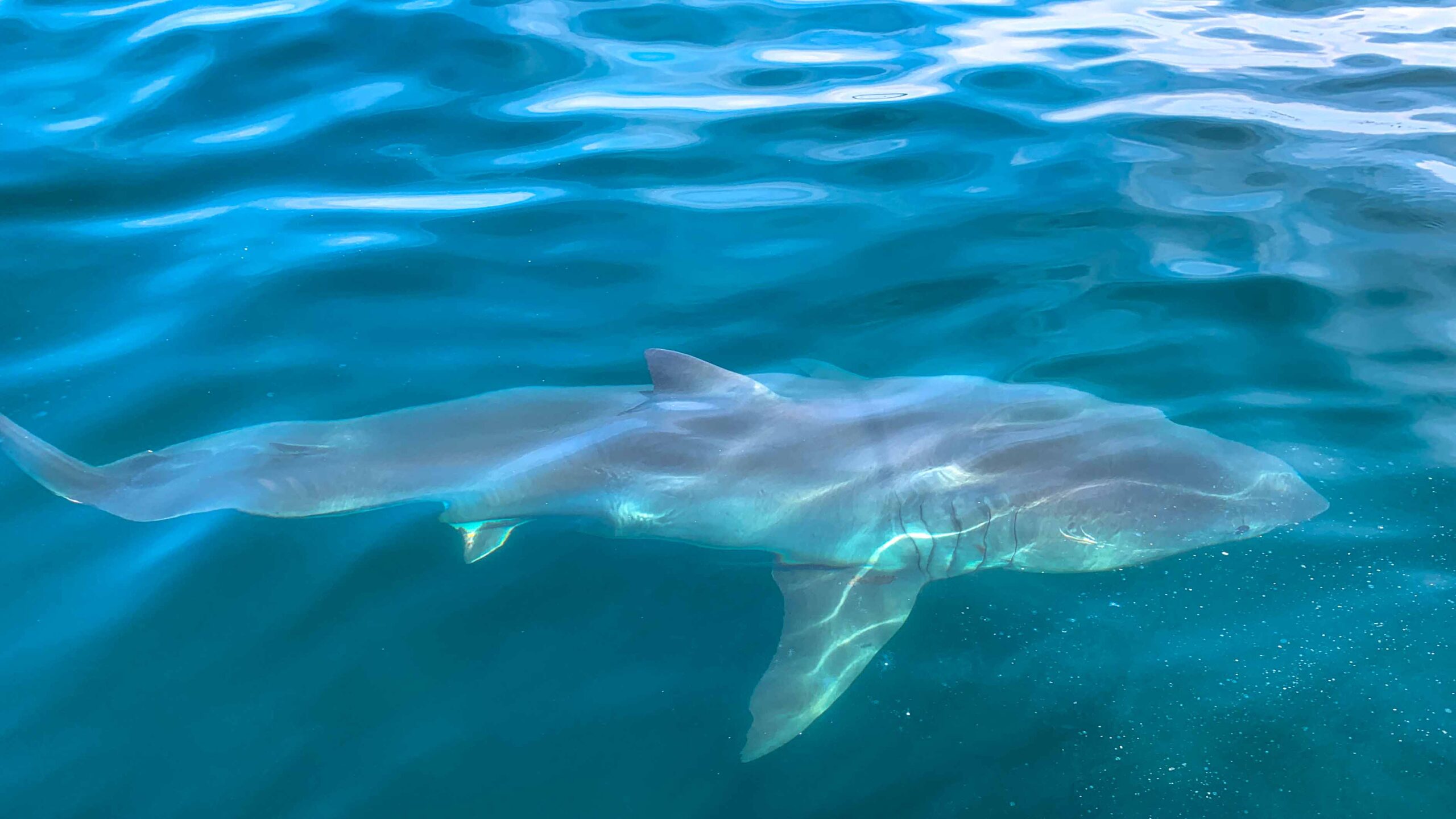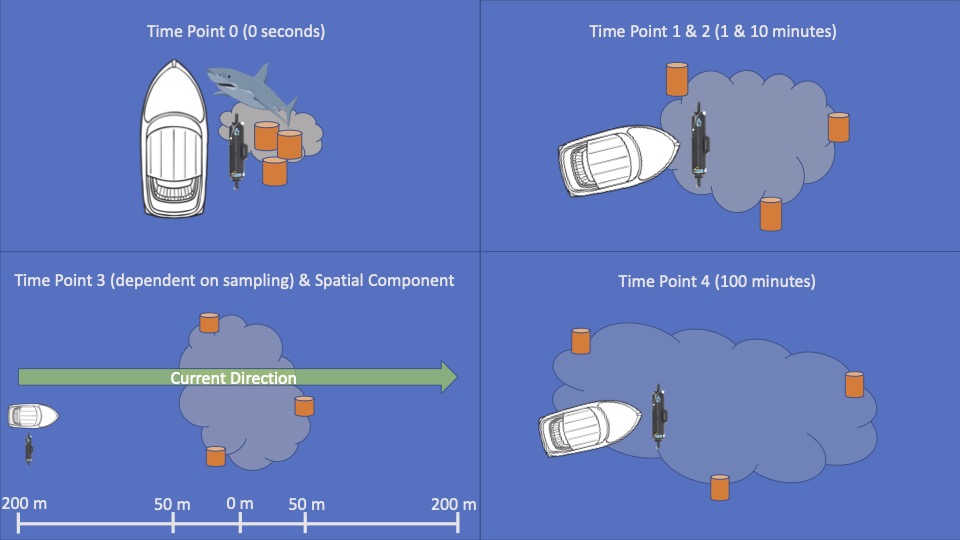
Investigating White Sharks’ Role in the Gulf of Maine with Kyle Oliveira
By Caty DuDevoir, Maine EPSCoR Media Intern
Traditionally, white sharks in the northwest Atlantic are found in Cape Cod and Nova Scotia waters, but little is known of their presence in the Gulf of Maine (GoM). Situated between both areas, one would suspect some presence of the species in Maine, especially with increasing temperatures in the GoM. Kyle Oliveira, a University of Maine Marine Biology Ph.D. candidate working with the Maine-eDNA grant, aims to uncover the role that white sharks play in the GoM. Working with species range shifts at the Bigelow Laboratory for Ocean Sciences, Oliveira is advised by Nick Record (Senior Research Scientist, Bigelow Laboratory for Ocean Sciences) and Damian Brady (Associate Professor of Marine Sciences, Darling Marine Center). Compared to Maine, areas like Cape Cod have allotted more research and resources toward studying white sharks. One of the reasons, Oliveira tells us, could be that “Maine is more focused on bluefin tuna or more commercial species. They haven’t given as much thought to white sharks in the past.”

Oliveira describes the early stages of his research as “determining whether or not environmental DNA (eDNA) is a viable tool for detecting white sharks in the Gulf of Maine.” Using detectors like eDNA and acoustic receivers, Oliveira hopes to ultimately create forecasts and models for the species. In the summer of 2021, Oliveira began collecting data in Cape Cod. Oliveria, with the help of fellow Cape Cod-based shark researchers, took advantage of a rare opportunity of white sharks feeding on a whale carcass and used buckets in the water to mimic the flow of the surface current—a technique known as bucket drifter analysis. Five-gallon buckets equipped with GPS loggers followed surface currents and were used as an estimated marker for the extents of the DNA plume from the white sharks. Oliveira was later able to filter the eDNA in the water samples collected at various points in time and space. Oliveira’s goal for the upcoming summer is to collect weekly data in Popham Beach and possibly Higgins Beach or Scarborough, located in midcoast and southern Maine respectively. By fall, he will have collected the necessary materials to begin sample processing. “When I have the data, I will start making species distribution models based on the positive detections I gather. Then, I will try to work those into making presence-only forecasts, which would give us an idea of what areas and conditions are favorable to white sharks.”
The forecasts and time scales of the presence of white sharks can provide lifeguard associations and diving schools with an extra layer of precaution. However, Oliveira mentions, “there is a degree of uncertainty that comes with each forecast, and these forecasts aren’t meant to say there will definitely be a white shark in a certain location.” The forecasts are context-dependent, meaning the white sharks may only be present where their prey is located or where other conditions are favorable, such as water temperature or light levels.
Not only do forecasts provide safety information to the general public, but they also help determine the importance of white sharks in the overall community ecology of an ecosystem. Oliveira reflects, “When an apex predator is introduced into a system, there are cascading effects that can happen.” For instance, if there is an increase in white sharks, the population of seals could possibly decrease. A decrease in seals could cause their prey to increase, thus eventually affecting the entire ecosystem. The prey of the apex predator can also modify its behaviors to avoid predator encounters completely, which can lead to an indirect impact on a prey species distribution. Forecasts could assist in understanding the balance in the delicate system and help uncover any significant effects.
As Oliveira continues his research, he hopes to broaden our understanding of the species and its role in a larger ecosystem. Understanding the role of white sharks in the ecosystem helps inform public safety, fishing, and, ultimately, how we understand the white sharks’ role in the GoM.
